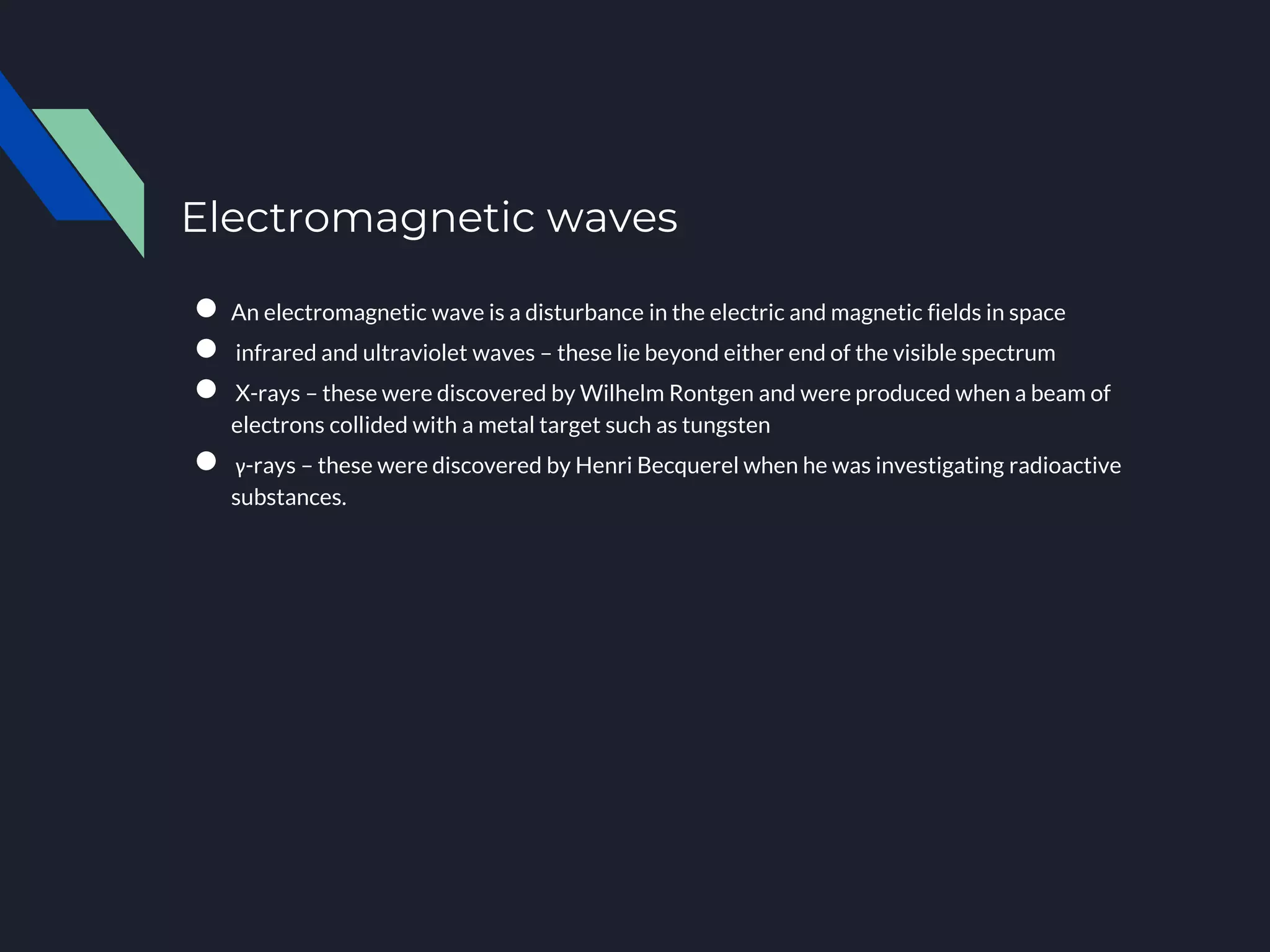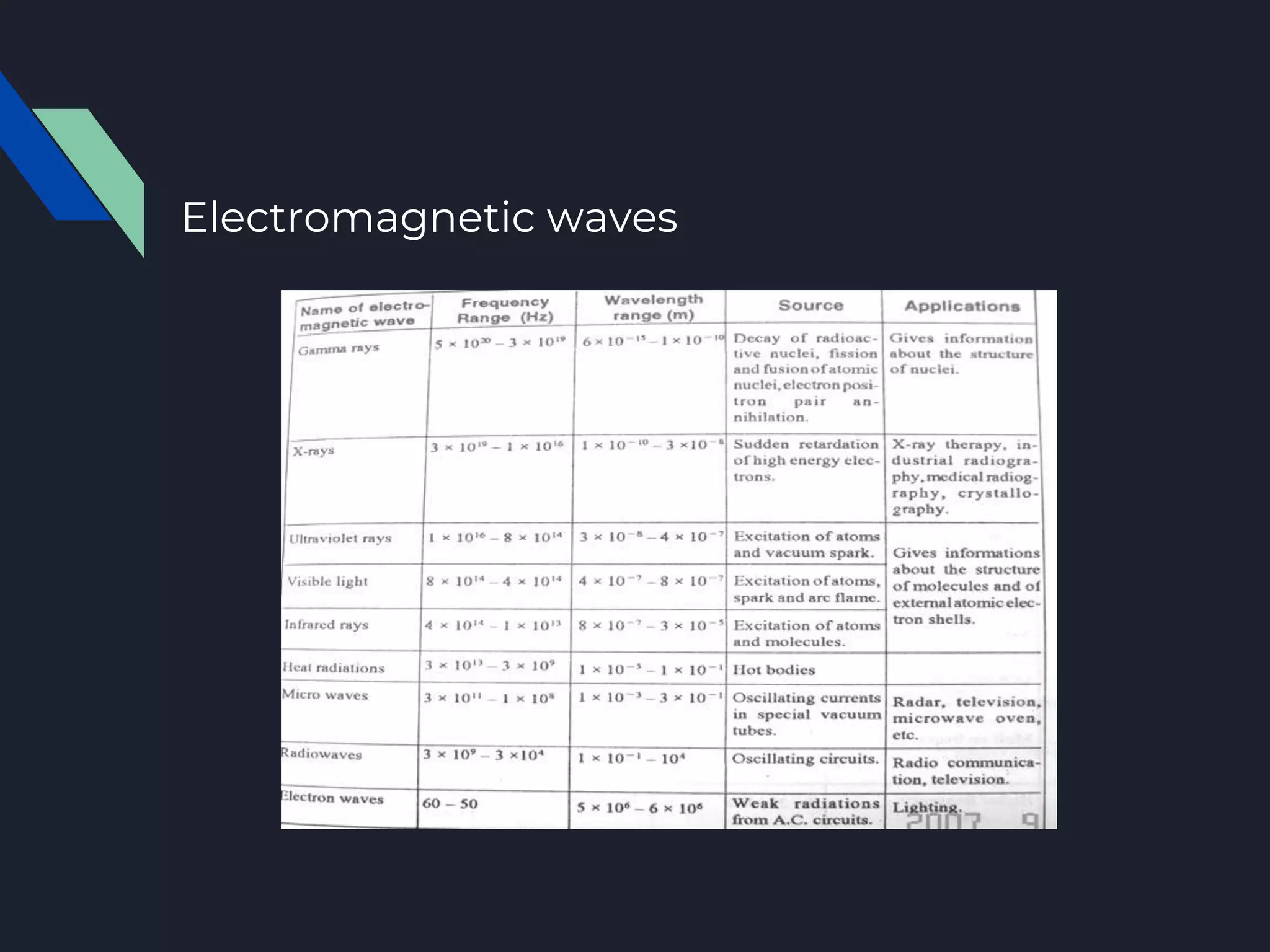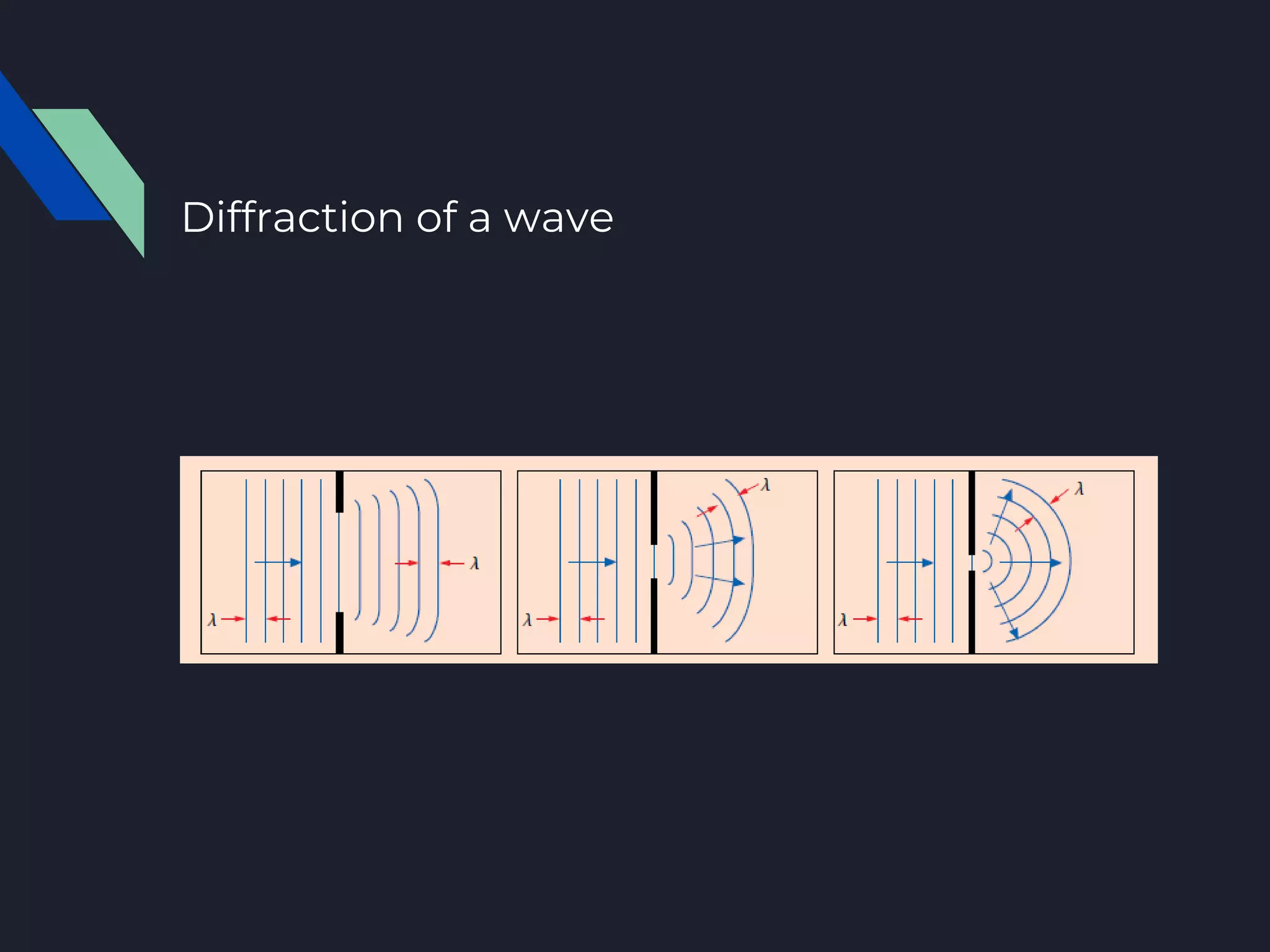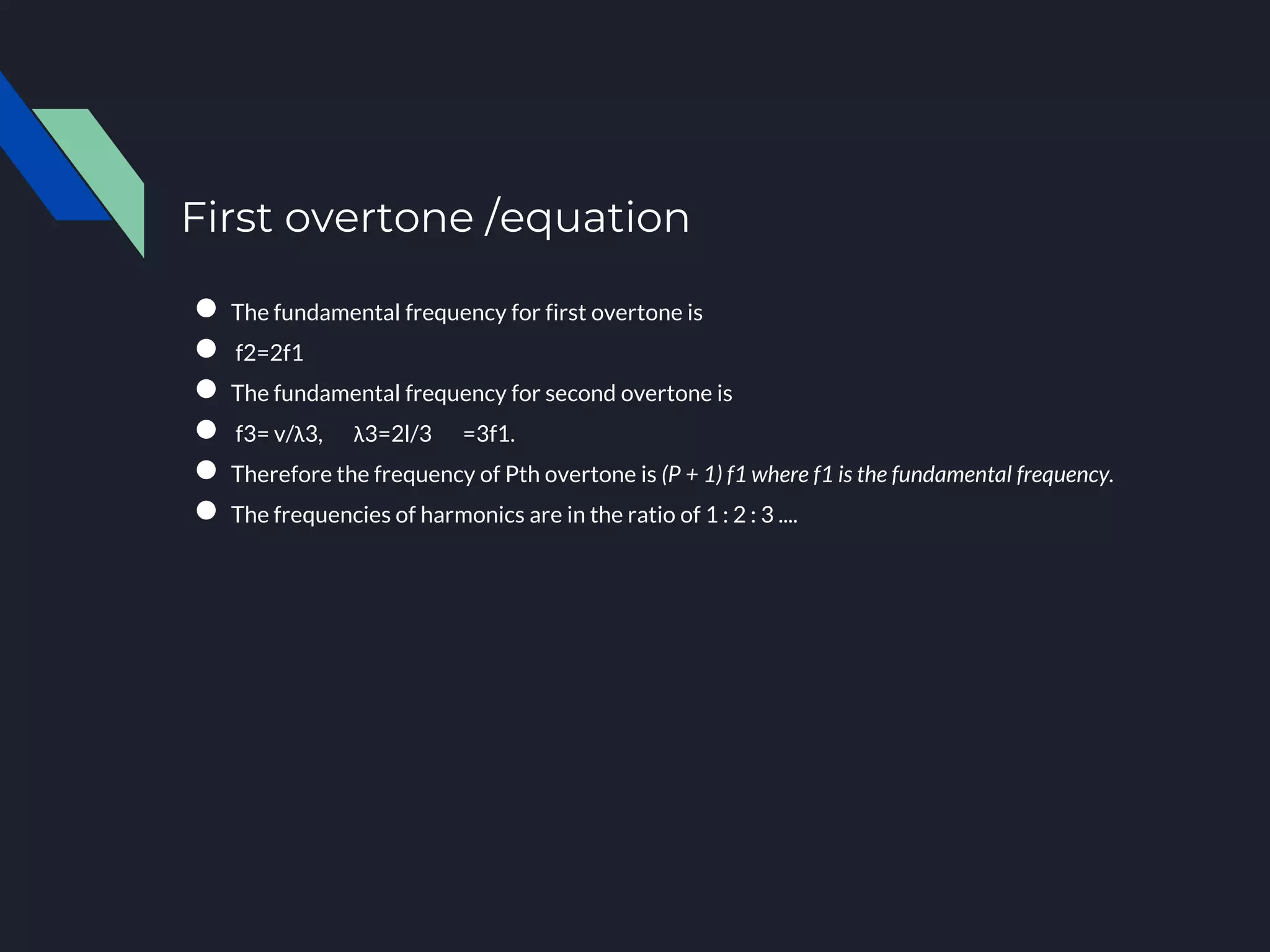- Progressive waves transfer energy from one place to another through a medium. Transverse waves have vibrations perpendicular to the propagation direction, while longitudinal waves have vibrations parallel.
- For stationary waves formed by interference of progressive waves, nodes are points of no displacement and antinodes are points of maximum displacement. The distance between nodes and antinodes depends on the harmonic.
- Organ pipes produce musical tones through stationary waves in a air column. Closed pipes have odd harmonics while open pipes have even harmonics. The fundamental and harmonic frequencies depend on pipe length and speed of sound.




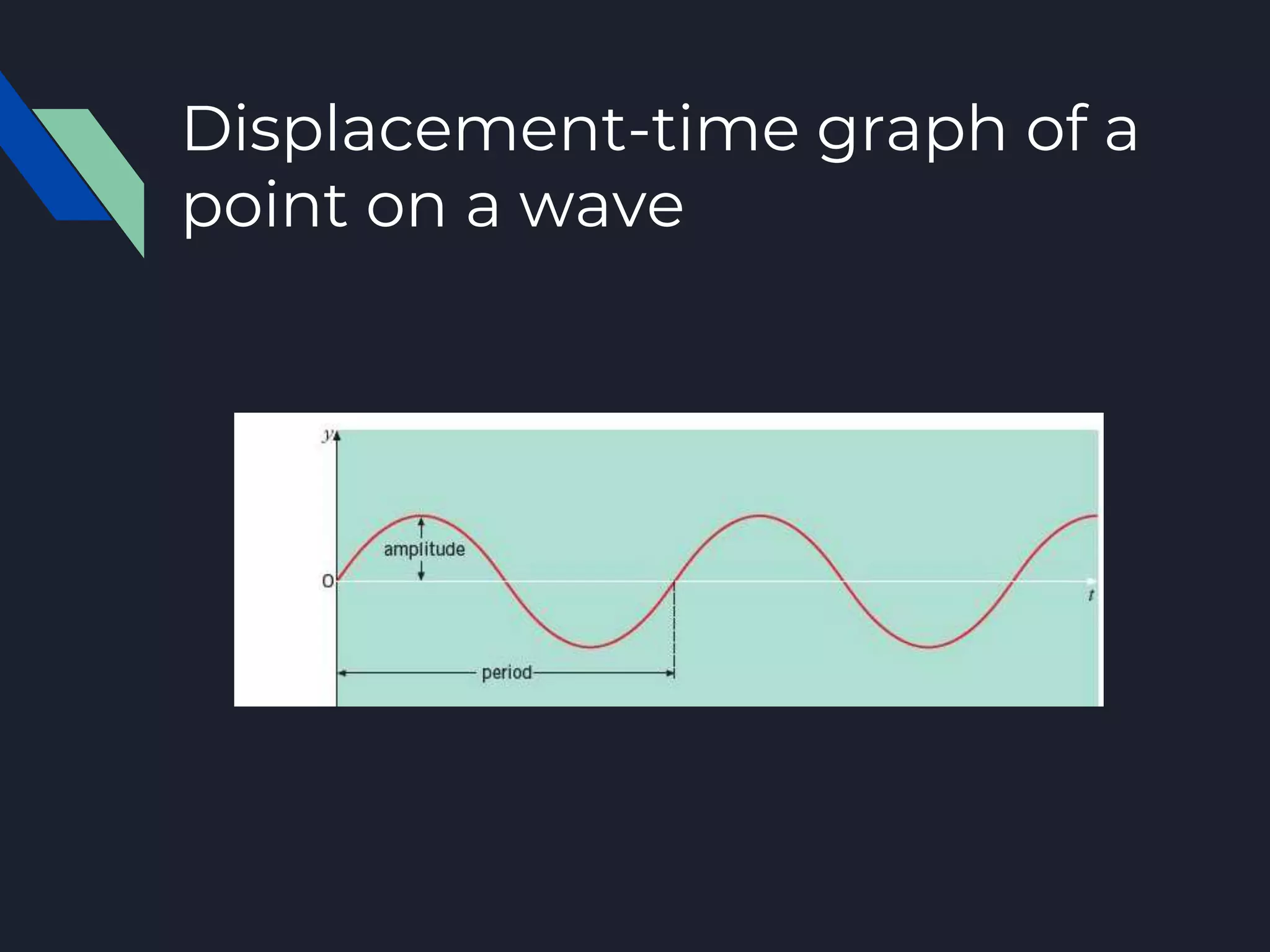









![Doppler effect
● The whistle of a fast moving train appears to increase in pitch as it approaches a stationary
observer and it appears to decrease as the train moves away from the observer. this
apparent change in frequency was first observed and explained by Doppler in 1845
● The phenomenon of the apparent change in frequency of sound due to relative motion
between the source and the observer is called doppler effect.
● f0 = fs [v+/-V0]/[v+/-Vs]](https://image.slidesharecdn.com/waves-newgoogleeditedone-181129154117/75/Waves-physics-as-level-cie-15-2048.jpg)




